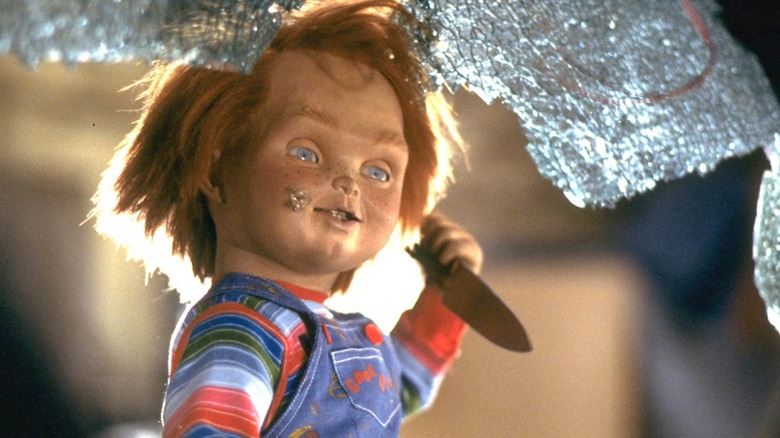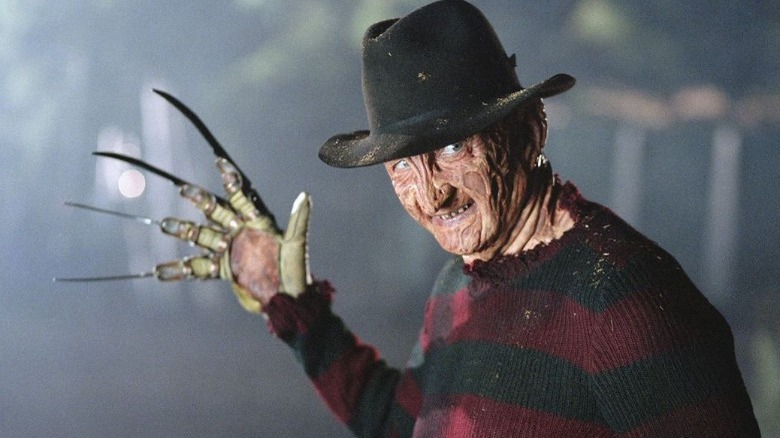
"Child's Play" occupies a unique space in the decade-long slasher wave of the '80s. The brainchild of writer Don Mancini, the original 1988 film has developed into a highly successful franchise spanning six sequels, a remake, and an ongoing TV series. That success was never guaranteed upon its release, however.
While "Halloween" formed the blueprint for the modern slasher film upon its release in 1978 -- proving the financial potential for low-budget horror movies and leading to a big boom across the next decade -- the slasher genre had been on the wane by the time "Child's Play" hit the screens. Take the "Halloween" franchise itself for instance. Between 1981 and 1988, the first three "Halloween" sequels made more at the box office than the original 1978 film, but only if you put them all together.
Thankfully, Mancini looked to 1984's "A Nightmare on Elm Street," which had replaced "Halloween" as the new model for slasher films, by introducing supernatural elements and giving the killer a voice. What makes "Child's Play" special is that, despite the clear influence of "Nightmare," Chucky is far from a copy of Freddy Krueger. Mancini created a genuinely original slasher that endured for decades and became a horror icon in its own right.
Verbal Viciousness

Chucky is far from the first killer doll to appear on film -- Mancini himself credits the Zuni doll from "Trilogy of Terror" and Talky Tina from "The Twilight Zone" as inspirations -- but he's arguably the most famous. To add to that, new developments in animatronic technology provided an opportunity for Chucky's personality to shine in a more fluid and lifelike fashion.
Unlike the slashers of the past, Chucky wasn't a silent masked killer, but a potty mouth who enjoyed taunting his victims with one-liners. Mancini put that down to Freddy Krueger, who was "a villain with a very distinct sense of humor ... who could taunt victims verbally. I was quite consciously influenced by that with Chucky, the idea of an innocent-looking child's doll that spouted filth." And just as Robert Englund became the bona fide face of Freddy, Chucky's voice actor Brad Dourif was essential in bringing the murderous toy to life.
"A Nightmare on Elm Street" also helped audiences become more familiar with the idea of a supernatural slasher, vital for Chucky's voodoo backstory to go down well. And as with the "Nightmare" series, the "Child's Play" films got goofier as they went along until Chucky's mouth made his antics downright comedic. Despite these similarities, Chucky has become an icon all of his own -- joining Freddy as one of pop culture's most recognizable horror movie mascots.
Mancini has talked about a dream crossover of the two called "Child's Play on Elm Street," which would showcase both of their verbal roasting abilities. For now, though, Chucky's legacy lives on TV.
Read this next: 12 Underrated Slasher Movies You Need To Check Out
The post How A Nightmare On Elm Street Influenced Don Mancini's Child's Play appeared first on /Film.
0 Commentaires